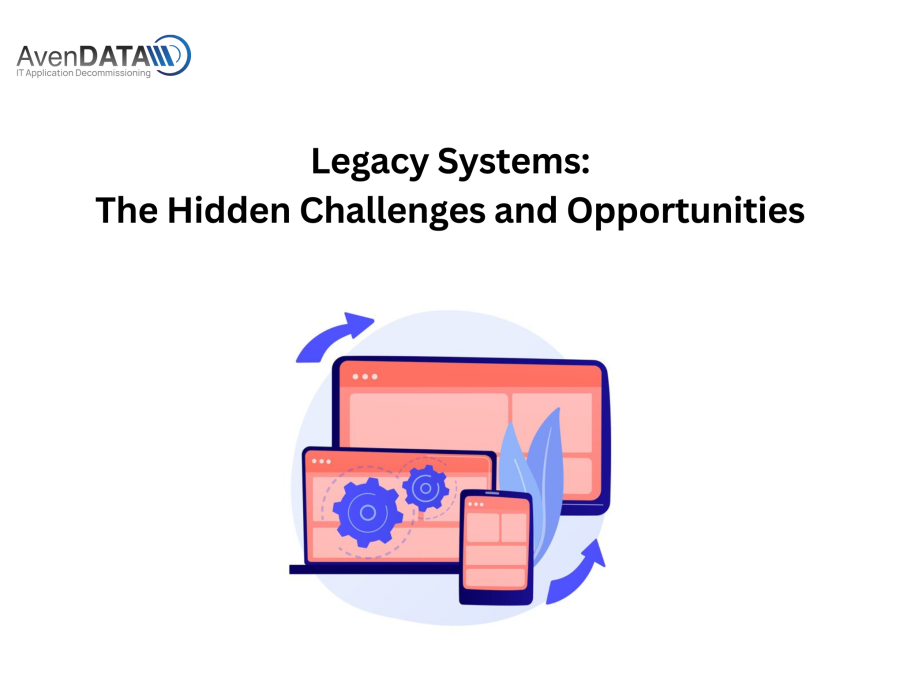Introduction: In the rapidly evolving world of technology, organizations often find themselves grappling with the presence of legacy systems — outdated software or hardware that has been in use for a considerable time. While IT legacy systems present challenges, they also offer unique opportunities. In this blog, we will explore the hidden challenges and opportunities associated with legacy systems, shedding light on how organizations can effectively navigate this complex landscape and leverage the potential benefits.
Challenges of Legacy Systems: Legacy systems pose various challenges that organizations need to address:
a. Outdated Technology: Legacy systems often use outdated technology that may not be compatible with newer systems, leading to integration difficulties and limited interoperability.
b. Security Risks: Obsolete systems may lack the necessary security updates and patches, making them vulnerable to cyber threats and data breaches.
c. Maintenance and Support: Legacy systems require specialized skills and resources for maintenance and support, which can be costly and challenging to find in the current market.
d. Scalability and Flexibility: Legacy systems may lack the scalability and flexibility required to adapt to changing business needs and technological advancements.
e. Compliance and Regulatory Issues: Legacy systems may not comply with current industry standards and regulations, exposing organizations to compliance risks and potential penalties.
Opportunities in Legacy Systems: Despite the challenges, legacy systems present unique opportunities that organizations can leverage:
a. Business Knowledge and Intellectual Property: Legacy systems often contain a wealth of business knowledge and intellectual property that has been accumulated over the years. Organizations can extract and integrate this valuable knowledge into new systems or processes.
b. Cost Savings: While maintaining legacy systems can be costly, organizations can find opportunities to optimize costs by gradually migrating or decommissioning certain components, streamlining operations, and repurposing existing resources.
c. Stability and Reliability: Legacy systems, despite their age, may have proven to be stable and reliable over time. Organizations can leverage this stability to continue supporting critical business functions while gradually transitioning to newer technologies.
d. Competitive Advantage: In certain industries, legacy systems may still provide a competitive advantage. Organizations that have successfully integrated legacy systems with modern technologies can differentiate themselves and offer unique services to customers.
e. Innovation Opportunities: Legacy systems often serve as a foundation that can be modernized or transformed into innovative solutions. Organizations can uncover opportunities to enhance existing systems, bridge gaps, or repurpose components to meet current and future business needs.
Strategies for Legacy System Management: To effectively manage legacy systems and unlock their hidden potential, organizations can consider the following strategies:
a. Modernization and Integration: Gradually modernize legacy systems by integrating them with newer technologies, leveraging techniques such as application programming interfaces (APIs), microservices, and cloud-based solutions.
b. Migration and Replacement: Develop a phased approach to migrate critical functionality from legacy systems to newer platforms while ensuring data integrity and minimal disruption to business operations.
c. Legacy System Optimization: Optimize legacy systems by identifying and addressing performance bottlenecks, enhancing user interfaces, and improving data management processes.
d. Legacy System Retirement: Identify legacy systems that no longer provide value and consider retiring or decommissioning them. Develop a comprehensive plan for data migration, archival, and system shutdown.
e. Knowledge Transfer and Training: Foster knowledge transfer between employees familiar with legacy systems and those responsible for modernization efforts. Provide training to bridge any skills gaps and ensure a smooth transition.
Conclusion: Legacy systems present both challenges and opportunities for organizations. While they may introduce complexities and risks, they also offer hidden benefits such as valuable business knowledge, cost-saving potential, stability, and competitive advantages. By adopting strategies such as modernization, migration, optimization, retirement, and knowledge transfer, organizations can effectively manage their legacy systems, unlock their hidden potential, and pave the way for innovation and growth. Embracing the challenges and opportunities of legacy systems can position organizations to thrive in a constantly evolving technological landscape.






Comments